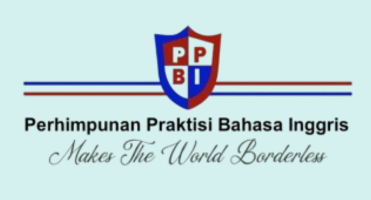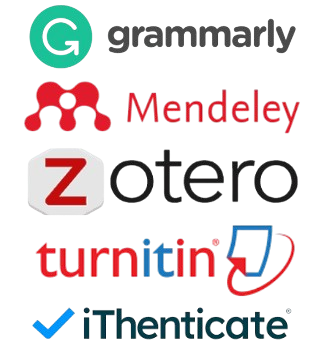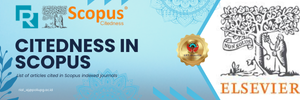The Role of Virtual Reality in Enhancing the Effectiveness of Teaching English for Specific Purposes
DOI:
https://doi.org/10.31963/rial.v2i1.4386Keywords:
Virtual Reality, English for Specific Purposes, Language Instruction, Management StudiesAbstract
This study provides a novel examination of the integration of Virtual Reality (VR) technology into English for Specific Purposes (ESP) instruction, specifically within the context of Management studies at Universitas Borneo Tarakan. It addresses a significant gap in empirical research by focusing on VR's effectiveness in teaching ESP within a management context, an area that has yet to be thoroughly explored. Using pre-and post-test scores from 286 students and detailed evaluation metrics, this research provides robust evidence of VR's transformative potential in enhancing ESP instruction. The findings indicate a clear improvement in language proficiency following VR-enhanced teaching, with significant increases in top-scoring students and decreases among those struggling with lower scores. Additionally, high levels of student engagement were observed during VR-enhanced lessons. Students reported positive usability experiences with the technology and expressed satisfaction with their learning outcomes. They also perceived significant benefits from using VR technology in their ESP instruction, including improved comprehension, increased motivation and engagement, and enhanced memory retention. However, alongside these positive outcomes are challenges that must be addressed for effective implementation. These include technical issues experienced by some participants suggesting the need for improvements or troubleshooting to enhance user experience; adaptation difficulties faced by learners when transitioning to new teaching methods introduced via virtual reality indicating the importance of providing additional support or guidance; and accessibility challenges emphasizing the need to ensure equal access for all learners when implementing such innovative technologies. In light of these findings, it is recommended that institutions like Universitas Borneo Tarakan looking to integrate VR into their ESP instruction consider establishing robust technical support structures to address potential issues. They should also provide additional guidance during transitions to new teaching methods introduced via virtual reality and prioritize ensuring accessibility for all learners. This study contributes valuable insights into effective strategies for modernizing ESP instruction using innovative technologies like Virtual Reality while highlighting areas where further exploration is needed.References
Balula, A., Moreira, G., Moreira, A., Kastenholz, E., Eusébio, C., & Breda, Z. (2019). Digital transformation in tourism education. Tourism in Southern and Eastern Europe..., 5, 61–72.
Basturkmen, H. (2014). Ideas and options in English for specific purposes. Routledge.
Bilsland, C., Nagy, H., & Smith, P. (2020). Virtual Internships and Work-Integrated Learning in Hospitality and Tourism in a Post-COVID-19 World. International Journal of Work-Integrated Learning, 21(4), 425–437.
Bocanegra-Valle, A. (2016). Needs analysis for curriculum design. In The Routledge Handbook of English for academic purposes (pp. 560–576). Routledge.
Bykonia, O. P., Borysenko, I. V, Zvarych, I. M., Harbuza, T. V, & Chepurna, M. V. (2019). Teaching Business English to Future Economists Using a Multimedia Textbook. International Journal of Higher Education, 8(4), 115–123.
Chang, H.-Y., Wu, H.-F., Chang, Y.-C., Tseng, Y.-S., & Wang, Y.-C. (2021). The effects of a virtual simulation-based, mobile technology application on nursing students’ learning achievement and cognitive load: Randomized controlled trial. International Journal of Nursing Studies, 120, 103948.
Coburn, J., Salmon, J., & Freeman, I. (2020). The effects of transition style for collaborative view sharing in immersive virtual reality. Computers & Graphics, 92, 44–54.
Dansereau, D. F. (2014). Learning strategy research. In Thinking and learning skills (pp. 209–239). Routledge.
De Vega, N., & Atmowardoyo, H. (2022). Book Review: English Curriculum and Material Development.
Di Natale, A. F., Repetto, C., Riva, G., & Villani, D. (2020). Immersive virtual reality in Kâ€12 and higher education: A 10â€year systematic review of empirical research. British Journal of Educational Technology, 51(6), 2006–2033.
Fontaine, M. (2014). Student Relationship Management (SRM) in higher education: Addressing the expectations of an ever-evolving demographic and its impact on retention. Journal of Education and Human Development, 3(2), 105–119.
Galindo-DomÃnguez, H., & Bezanilla, M. J. (2021). Digital competence in the training of pre-service teachers: Perceptions of students in the degrees of early childhood education and primary education. Journal of Digital Learning in Teacher Education, 37(4), 262–278.
Gibson, L., & Obiakor, F. (2017). Computer-based technology for special and multicultural education: Enhancing 21st-century learning. Plural Publishing.
Gil-Garcia, J. R., Helbig, N., & Ojo, A. (2014). Being smart: Emerging technologies and innovation in the public sector. Government Information Quarterly, 31, I1–I8.
Hoidn, S., & Reusser, K. (2020). Foundations of student-centred learning and teaching. In The Routledge International Handbook of student-centred Learning and Teaching in Higher Education (pp. 17–46). Routledge.
Horwitz, E. K. (2000). Teachers and students, students and teachers: An everâ€evolving partnership. The Modern Language Journal, 84(4), 523–535.
Iswati, L., & Triastuti, A. (2021). Voicing the challenges of ESP teaching: Lessons from ESP in non-English departments. Studies in English Language and Education, 8(1), 276–293.
Joshi, A., Vinay, M., & Bhaskar, P. (2021). Impact of coronavirus pandemic on the Indian education sector: teachers' perspectives on online teaching and assessments. Interactive Technology and Smart Education, 18(2), 205–226.
Lan, Y.-J. (2020). Immersion into virtual reality for language learning. In Psychology of learning and motivation (Vol. 72, pp. 1–26). Elsevier.
Levallet, N., & Chan, Y. E. (2019). Organizational knowledge retention and knowledge loss. Journal of Knowledge Management, 23(1), 176–199.
Makransky, G., Terkildsen, T. S., & Mayer, R. E. (2019). Adding immersive virtual reality to a science lab simulation causes more presence but less learning. Learning and Instruction, 60, 225–236.
Olson, B. J. (2022). Youth Perceptions on Learning in Immersive Virtual Reality: Developing and Assessing Essential Socioemotional Skills. University of Saskatchewan.
Rendi, G. P. (2023). Teaching English for Hospitality Through Virtual Reality-Based Learning to Improve Students' Motivation and Speaking Achievement. UNIVERSITAS LAMPUNG.
Schunk, D. H. (2023). Self-regulation of self-efficacy and attributions in academic settings. In Self-regulation of learning and performance (pp. 75–99). Routledge.
Siyam, N. (2019). Factors impacting special education teachers’ acceptance and actual use of technology. Education and Information Technologies, 24(3), 2035–2057.
Stefaniak, J. (2020). A systems view of supporting the transfer of learning through e-service-learning experiences in real-world contexts. TechTrends, 64(4), 561–569.
Striuk, A., & Semerikov, S. (2019). The dawn of software engineering education.
Thompson, P., Kriewaldt, J., & Redman, C. (2020). Elaborating a Model for Teacher Professional Learning to Sustain Improvement in Teaching Practice. Australian Journal of Teacher Education, 45(2), 81–103.
Vega, N. D., Basri, M., & Nur, S. (2023). From Smartphones to Smart Classrooms: The Impact of Mobile Technology in Education (R. Rahayu & I. Anas (eds.)). Dewa Publishing.
Vega, N. D., Eppendi, J., & Setyawan, F. H. (2023). EDUTECH REVOLUTION: Merdeka Teknologi, Merdeka Belajar Untuk Pendidikan Unggul (Arifin (ed.)). Dewa Publishing.
Wang, Y., Lin, L., & Chen, O. (2021). The benefits of teaching on comprehension, motivation, and perceived difficulty: Empirical evidence of teaching expectancy and the interactivity of teaching. British Journal of Educational Psychology, 91(4), 1275–1290.
Downloads
Additional Files
Published
Issue
Section
License
Copyright (c) 2024 Research and Innovation in Applied Linguistics [RIAL]

This work is licensed under a Creative Commons Attribution-ShareAlike 4.0 International License.
Authors who publish with this journal agree to the following terms:
Authors who submit article to this journal, agree to grant the copyright to Research and Innovation in Applied Linguistics (RIAL) under a Creative Commons Attribution License: Creative Commons Attribution-ShareAlike 4.0 International License.
![]()
For collaborative works, authors should ensure that they have secured the necessary permissions from co-authors to submit the manuscript and grant the rights outlined in this policy.
Archiving and Access:
RIAL upholds an open access policy, ensuring that articles are freely accessible to a global audience upon publication. Authors' work will be archived electronically, facilitating its long-term availability and visibility.









.png)


